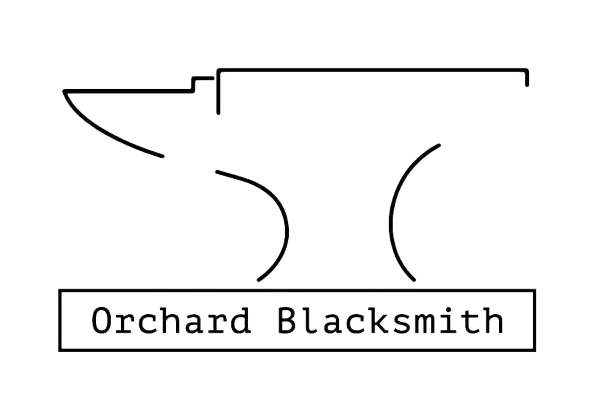Taming the Twist: Mastering Thin Stock Forging
Working with thin steel can be both rewarding and frustrating. On the one hand, thin stock heats quickly and responds readily to the hammer. On the other, it warps, twists, and bends at the slightest mistake. For blacksmiths, learning how to control distortion when forging thin stock is a vital skill — especially when making decorative work, hardware, or small functional items.
This guide will walk you through why distortion happens, techniques for reducing it, and practical tips to get straighter, cleaner results.
Why Thin Stock Distorts
Thin metal reacts differently than heavy bar because:
Fast Heat Response: It heats up — and cools down — much quicker, which can cause uneven expansion or contraction.
Hammer Force vs. Mass: With less material under the hammer, each blow has a bigger effect.
Lack of Support: Thin stock flexes easily if not properly supported on the anvil.
Localized Strikes: Working one area too much without balancing the other side leads to curves and twists.
Understanding these factors is the first step to controlling distortion.
Techniques to Reduce Distortion
1. Heat Evenly
Bring the entire working section of the stock to the same temperature.
Use the “shadow test”: pull the steel from the fire and check that there are no dark patches along the length.
2. Use Lighter, Controlled Blows
Don’t swing like you’re forging 1-inch bar. Thin stock needs finesse.
Multiple light taps are better than one heavy strike.
3. Work Both Sides
Alternate hammering on top and bottom, or flip the bar frequently.
This balances stresses and reduces curling.
4. Support the Work Properly
Keep as much of the thin stock flat on the anvil as possible.
For scrolls or curves, use the horn or edge of the anvil to provide support.
5. Plan Your Forging Sequence
Make long draws or tapers in several heats instead of trying to finish in one.
If distortion starts, correct it immediately while the metal is still hot.
Practical Tips
Normalize Often: Heating to a dull red and letting the steel air-cool can help relieve stress build-up.
Straightening Passes: After forging, use light hammer taps along the length to straighten before cooling.
Watch the Colours: Don’t let thin stock overheat; it can burn quickly.
Clamping Trick: For precision work, clamp thin stock between thicker bars after forging to cool it straight.
Practice on Scrap: The more time you spend practicing, the more natural controlling distortion becomes.
Common Projects Using Thin Stock
Hooks, brackets, and hardware straps.
Decorative scrollwork.
Small utensils like spatulas or ladles.
Forged leaves and flowers.
Wall hangers and sign brackets.
Final Thoughts
Forging thin stock is a test of control, rhythm, and planning. Unlike heavy bar where brute force can fix mistakes, thin steel punishes overstrikes and uneven heating. By mastering lighter blows, working evenly, and correcting distortion early, you’ll gain confidence and precision in your blacksmithing.
If you would like to discuss a potential project, please do not hesitate to contact us.
